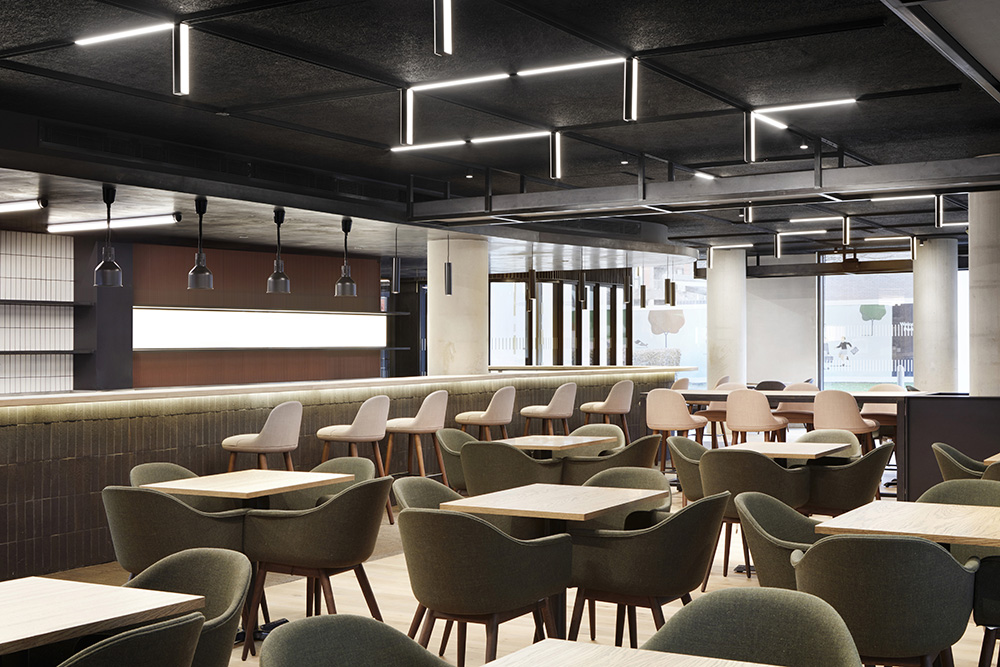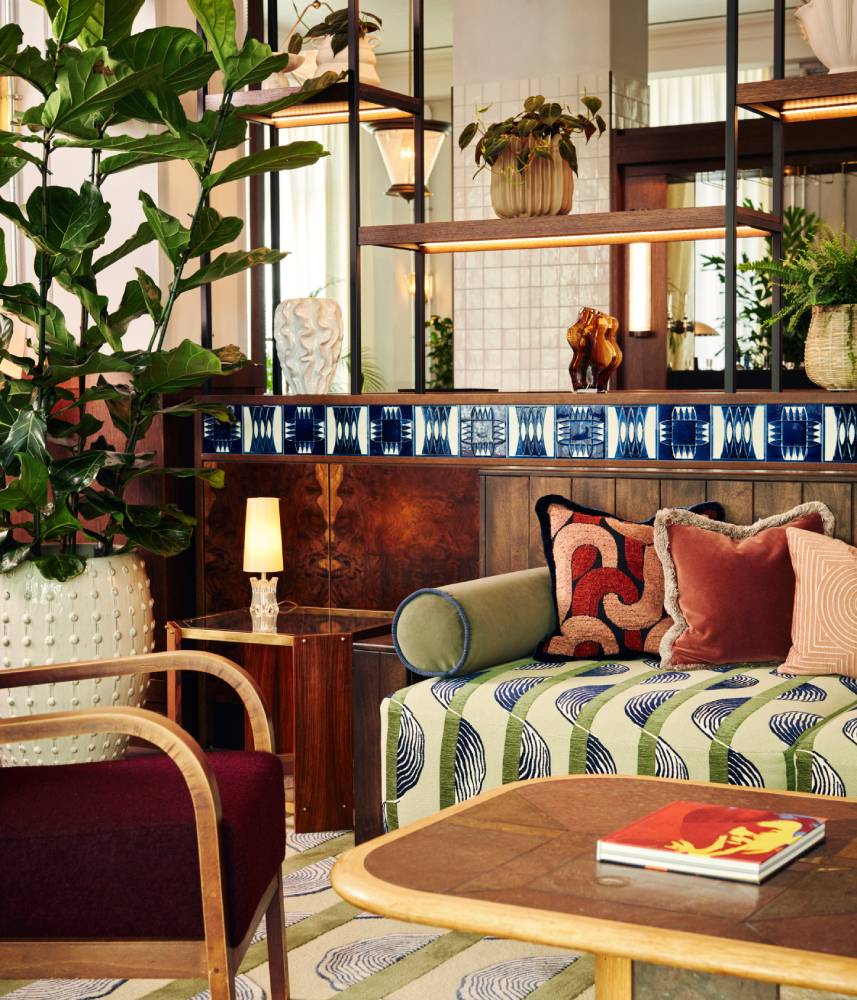Common Ground Workshop take cues from the urban realm at Embassy Gardens
Common Ground Workshop have completed a new speculative hospitality development including a restaurant, bar and events space at Embassy Gardens, Nine Elms.
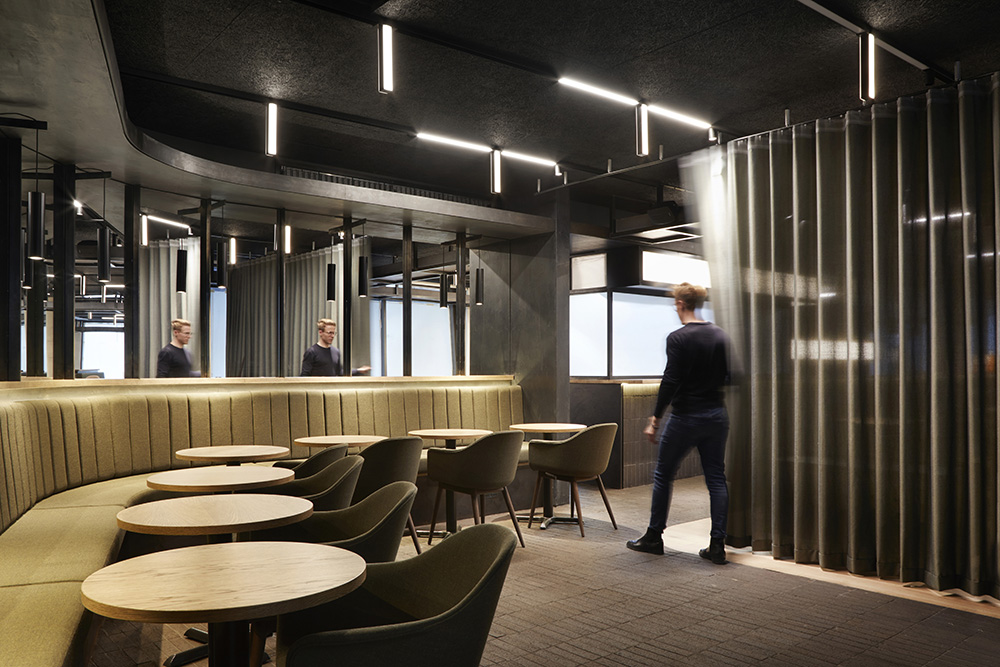
Project Team
-
Client
Ballymore
-
Architect & Interior Designer
Common Ground Workshop
-
Main Contractor
Artemis Interiors
-
Project Manager
PBC
-
Services engineer
Inertia Construction Engineering
-
Furniture Provider
Hunters
-
Flooring
Jordan Andrews, Greste, Chelmer Valley, Forbo Flooring Systems
-
Furniture
Menu, Orangebox, Hunters
-
Surfaces
Marmo Stucco, Valchromat, Domus, Gooding Aluminium, Schuco, Cre8, Kvadrat, Troldtekt
-
Lighting
XAL, JJ engineering
- Featured Companies
Common Ground Workshop were commissioned by Ballymore to undertake a full architectural service for a tenant led fit out of the space with a view to creating a unique destination venue at the site. The space is located opposite the newly proposed Nine Elms Linear Park and next to the American Embassy building. The unit is part of a wider urban realm masterplan comprising circa 45,000 sqft of commercial space and 8,000 sqft of retail over an 8ha site.
The design seeks to animate the corner plot and to invite the outside in, and to offer a unique internal experience that fluctuates between open space, private space and visible storage.
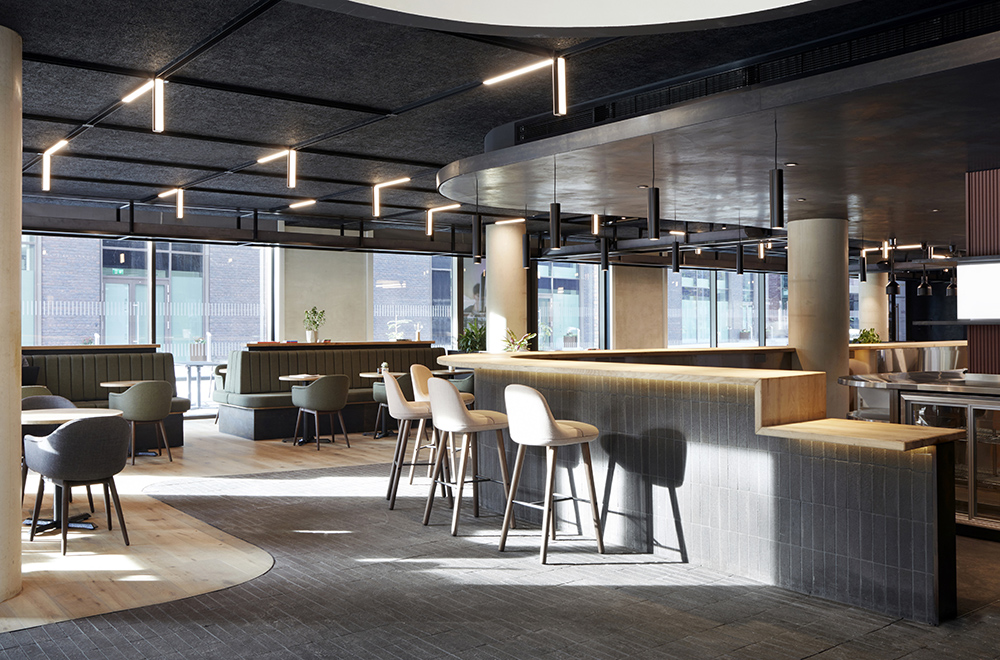
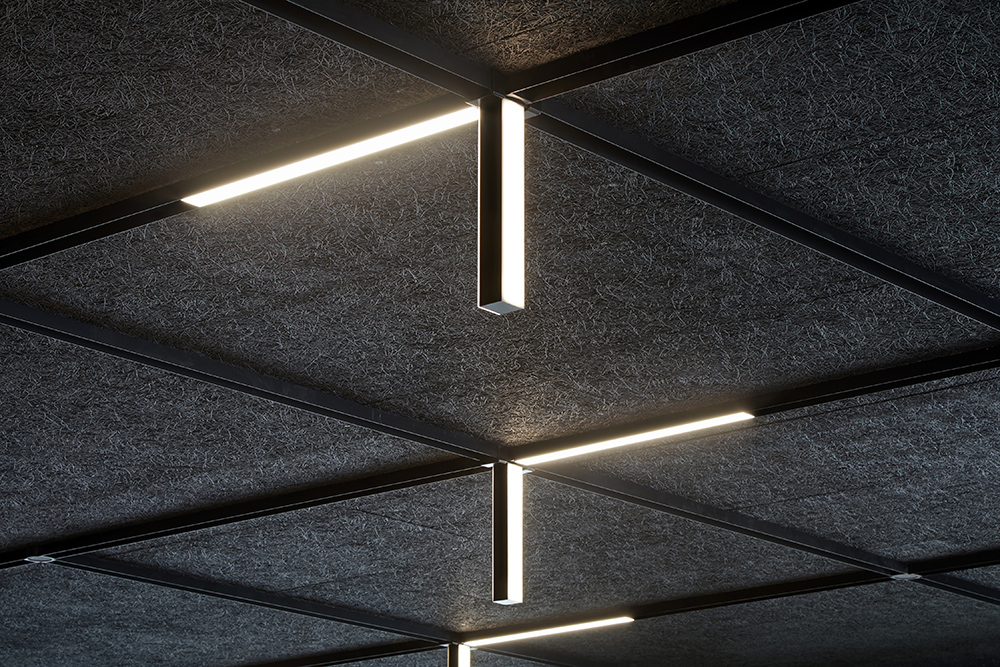


Located on a prominent corner, the concept creates an interior extension of the streetscape using a brick clad bar front and floor that winds through the L-shaped floor plan, uniting the two distant ends. The material language of the space draws inspiration from hard and soft boundaries found within the urban realm – the design is characterised by hard surfaces such as brick, blackened steel and polished plaster set against softer fabrics, planting and warm oak details throughout.
A brick floor representing a continuation of the high street curves through the full length of the space from side to side and unites the different uses and functions – also utilised as a bar front in a soldier course arrangement.
The ceiling is clad in black wood wool, punctuated by a gridded bespoke lighting track with drop-down custom-made LED light battens, emphasizing the urban and industrial aesthetic across the unit.
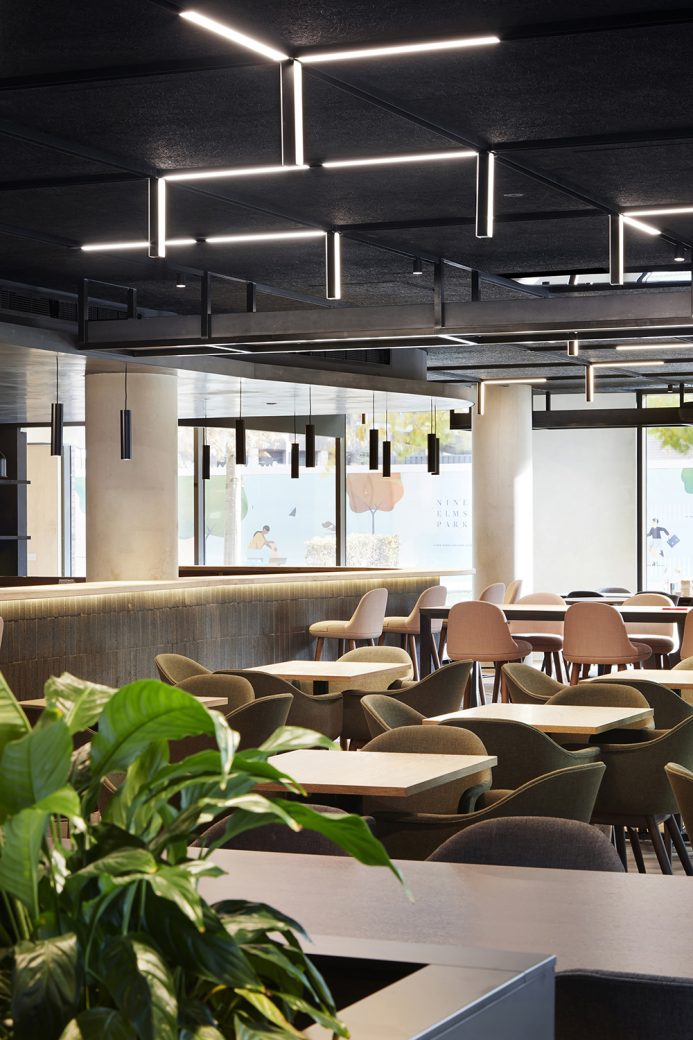
Other material finishes such as blackened steel and black polished plaster work in harmony to offer a variety of darker textures, varying between matt and gloss finishes. The light, rustic oak timber bar top and joinery, high- and low-level planting and a blend of muted green fabric cushioning soften the harder industrial design features.
The lighting design is depicted as a pervasive two-dimensional city grid with bespoke custom-made LED lighting battens on the corner nodes to add depth to the space and create a three-dimensional appearance to the standard proprietary lighting track. The grid is integrated into a black wood wool ceiling lining that is punctuated by continuous suspended planter trays that further animate the ceiling plane and allow for hanging plants.
A fundamental ambition for the project was to create a space with a strong visual identity that is multi-functional and that can become a destination at Embassy Gardens, Director Jack Pannell tells us – also promoting a stronger cohesive local community asset. ‘As well as internal flexibility and a variety of informal seating and dining configurations, the unit has outdoor space that can be utilised in the warmer months for community meeting and social gathering (or indeed, social distancing). This external space will be invaluable if the pandemic continues well into the year and will offer the tenant the ability to provide a range of commercial activities and local cultural events.’
Common Ground Workshop worked meticulously with the client and tenant team to harmonise and sign off every material finish and to ensure a consistency of appearance and texture throughout the unit. Amongst the key challenges was obtaining approval for the brick bar front and flooring. Other bespoke elements such as the ceiling mounted light batted and the visible keg room (that fronts the internal space-scape and the street outside) had to be painstakingly detailed tested and mocked up to ensure a balanced and refined interior finish.
Initially conceiving and planning the space as a dynamic flexible unit with an events capability, the design incorporates a great deal of movable seating and loose furniture with great potential for adaption, Jack adds. ‘With the pandemic hitting after the project had commenced, this early move towards a flexible design seems to have been prudent – and now allows the tenant to achieve adequate social distancing and to change with the times.’
Photography: Jack Hobhouse

